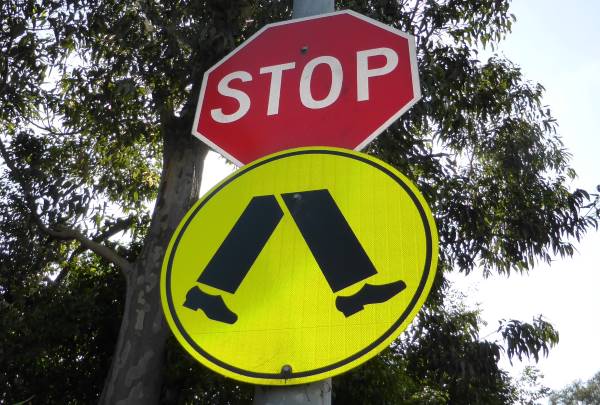The following advice is direct from driving instructors and they know what is required in a driving test.
Get enough practice
Testing officers know what to look for when a person has predominantly been taught by Mum or Dad – all those bad habits will have been passed on. This is why it’s important that you get enough lessons with an actual driving instructor so that you can pick up the right habits from the star.
Failure to proceed on a green light
It seems like this might be the most unlikely, but if you get distracted and don’t notice the green light the examiner might fail you, especially if a vehicle behind has to toot the horn to make you aware of it. You also need to be aware of how you pull away at a green light. If you’re crossing an intersection then you should glance left and right before you go just in case someone runs the red light.
Car has defects
Indicators and brake lights that aren’t working are common defects that mean your car isn’t roadworthy and you won’t be able to take it on a test. Also be aware of the tread depth on your tyres, that your learner plates are displayed correctly and that you have sufficient fuel to complete the test (you can’t stop for fuel during the test).
Tailgating
If you follow too closely, you will be failed. A typical case where this might happen is in the wet going downhill where you should increase your following distance. Change down a gear to hold the car at the right speed if you find you’re on the brakes all the time.
Stress and nervousness
Your own stress and nervousness can make you drive like you’re an absolute beginner, making stupid decisions. Look at our articles on using affirmations and visualisation to help you relax.
Speeding
It’s easy for your speed to creep up if others around you are also speeding. Don’t give into the peer pressure. And also watch for a change in speed limit. If you move from an 80kph to a 50kph zone then you need to be at 50kph at the time you reach the 50kph sign. If you are going from a 50kph to an 80kph zone, you must remain at 50kph until you get to the 80kph zone. Downhill stretches are areas where keeping your speed down is more difficult.
Failing to give way
This is an easy one to do on roundabouts (many people don’t know how to signal properly on a roundabout) and at intersections where visibility is limited. Making the right judgment (“gap selection”) at an intersection is important. If you pull out in front of another vehicle you must be able to accelerate away safely without causing the other vehicle to brake or alter its course.
Checking your blind spot
A common cause of failure is the driver not remembering to check over their shoulder when changing lanes, merging or moving away from the kerb. The best process is mirror, indication, blind spot, manoeuvre. This applies on both sides, and as you merge you should be aware of what’s to the left of you if you are merging from the right lane.
Poor awareness at railway level crossings
Remember that if you cross a railway crossing that has no lights or barrier arms that you should slow down and be prepared to stop. Look both ways before you cross. If it has a stop sign you must stop.
Failure to stop for pedestrians

At pedestrian crossings you must remember to stop for a pedestrian waiting to cross.
Failure to stop at a compulsory stop sign
This is such an easy one to miss. If you don’t stop at a compulsory stop sign then it’s an instant failure.
